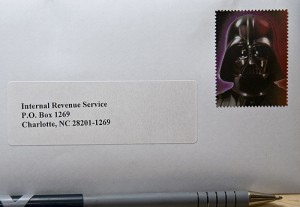
Last year there was a big concern over charities losing their tax-exempt status if they hadn’t filed any annual tax form with the IRS for three consecutive years. This year, more nonprofits face the requirement of filing the longest form, as IRS reduces the filing threshold.
Public nonprofits enjoy a short menu of forms, and your selection is dictated. Whether you file the 990-N (postcard), 990-EZ or full Form 990 depends upon your gross receipts and total assets. Last year, the lengthy, onerous (avoiding temptation to use “taxing”) Form 990 requirement kicked in if your gross receipts were more than $500,000 or total assets were greater than $1.25 million. In 2011, those limits are down to $200,000 and $500,000, respectively. Those are considerable reductions and IRS will embrace more organizations into the 990 filing family.
The postcard is a breeze, asking merely nine simple questions. The 2010 EZ form (filed this year) has 52 questions, plus subparts and 8 schedules. The full 990–may I speak freely on my blog? we’re all adults here–is a bitch. It boasts 12 parts across 12 pages with nearly 200 primary questions plus 15 schedules.
The 990 is a bold, robust effort at oversight and disclosure, with more than a hint of burden, intended to protect the public from those who would absquatulate with charitable dollars. Witness the story of the U.S. Navy Veteran’s Association as evidence that protection requires more than a form.
More nonprofits will file the postcard this year, too. That threshold doubled from 2010, to gross receipts under $50,000. Over that, the EZ or 990 is submitted. That means fewer EZs and more postcards this year from charities whose annual receipts are between $25,000 and $50,000. Good news for small nonprofits.
The rules are all laid out in this IRS chart.
Anyone who can use the word “absquatulate” in a sentence is either a pedant or a cruciverbalist. ‘Fess up, Tony.